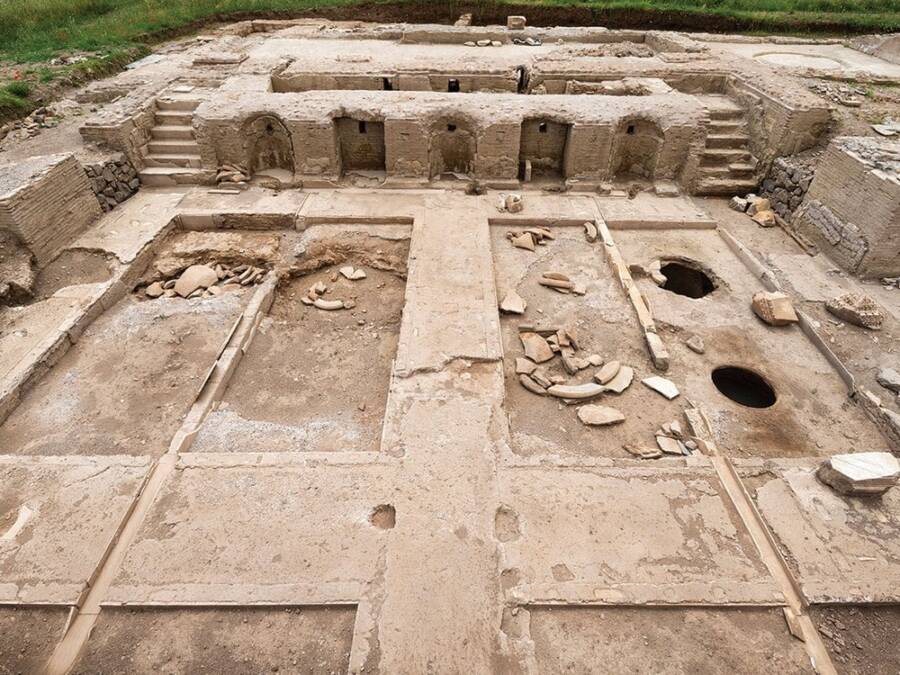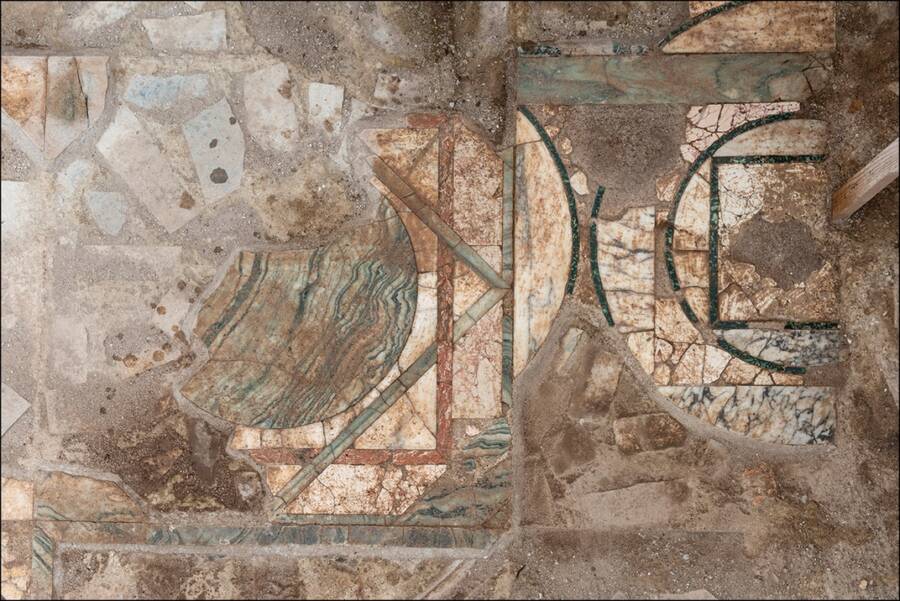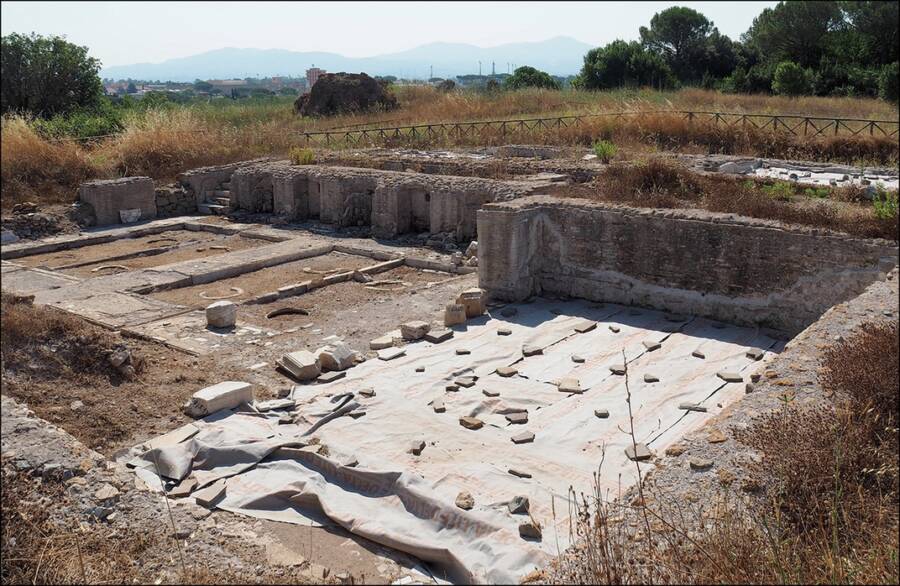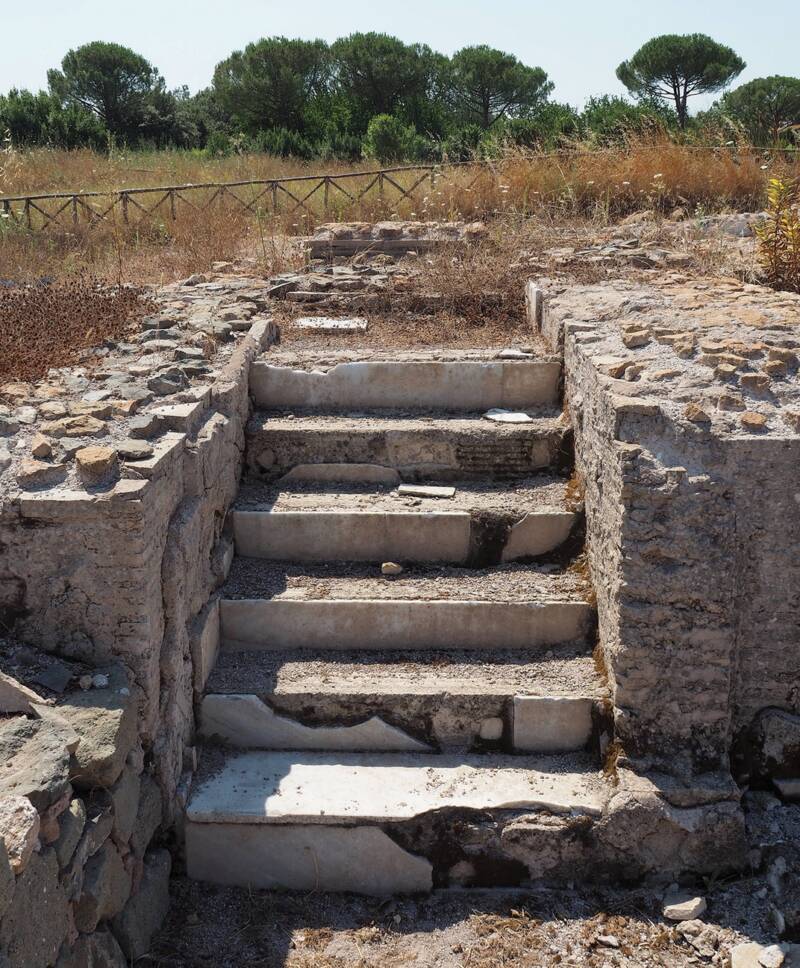The ancient winery was likely constructed during the reign of Roman emperor Gordian III, previously believed to have had little impact on Rome's architectural history.

Stefano Castellani / Dodd, Galli, Frontoni 2023The villa as seen from above, with a wine cellar in the foreground. Archaeologists believe the site was designed to be a spectacle.
South of Rome, next to the ancient Appian Way road, is the vast Villa of the Quintilii. This opulent Roman home is believed to have been constructed sometime around 151 C.E. by the aristocratic brothers Sextus Quintilius Valerius Maximus and Sextus Quintilius Condianus — who were then put to death by the emperor Commodus some 30 years later so that he could take possession of the coveted villa for himself.
As a new study published in the journal Antiquity found, around 240 C.E., the site was expanded to allow Roman elites front-row seats to a unique spectacle: winemaking.
The site marks the second known example of Greco-Roman structures built specifically for the purpose of viewing the winemaking process.
“Wine was a huge source of wealth for the Roman elite. They owned vast amounts of land dedicated to viniculture, winemaking, and they were selling it all across the Mediterranean,” study author Emlyn Dodd of the British School in Rome told NBC News. “But at the same time, wine permeates the whole culture and society — it’s used in religion, medicine, in daily life. It was the main beverage when water wasn’t safe to drink.”

Stefano Castellani / Dodd, Galli, Frontoni 2023The remnants of a decorated floor of one of the villa’s dining rooms.
The Villa of the Quintilii was one of ancient Rome’s most massive villas — in fact, when it was first discovered it was known as Roma Vecchia, or “Old Rome,” because its size was comparable to that of a small city. The Villa of the Quintilii had its own theater, an arena to stage chariot races, and a bath complex lined with extravagant marble.
Given the lavish excess of the villa, it should come as no surprise that its winery was among the most elaborate and impressive in ancient Rome. It sat in what was once a vast and sprawling landscape of orchards, and the facility itself was comprised of a series of extravagant dining rooms which contained fountains of flowing wine.
From the dining rooms and other areas, emperors, aristocrats, and Roman elites could watch enslaved workers stomp freshly harvested grapes in marble-lined treading areas.
“Usually these treading areas would be covered in a waterproof concrete,” Dodd told The Guardian. “But these were covered in red marble. Which isn’t ideal, as marble gets incredibly slippery when wet. But it shows that whoever built this was prioritizing the extravagant nature of the winery over practical considerations.”

Stefano Castellani / Dodd, Galli, Frontoni 2023A view from one of the dining rooms into what used to be the treading area.
When enslaved workers finished treading the grapes, they transported them to the winery’s two mechanical presses, each roughly six-and-a-half feet in diameter. The crushed grapes then passed through three fountains in a courtyard wall, where the juice would gush out and flow along open channels into ceramic storage jars set into the ground.
“It’s much more about the spectacle than the product being produced. The level of decoration, with these fountains of wine, really shows that,” Dodd said. Surrounding the courtyard on three sides were the open dining rooms, where emperors and guests could enjoy the entirety of the spectacle while they dined.
“With the addition of various sounds — workmen joking, laughing or grunting, and the music that accompanied treading — a truly theatrical impression would have been realised,” Dodd and colleagues wrote in the study.

Stefano Castellani / Dodd, Galli, Frontoni 2023Stairs at the Villa of the Quintilii that once led down into a large wine cellar.
The expansion or construction of this flamboyant winery can likely be attributed to the Roman emperor Gordian III, as evidenced by the name Gordian appearing on the site’s massive wine-collection vat. Archaeologists have determined Gordian III to be the most likely emperor of that name as both Gordian I and Gordian II only ruled for a handful of days.
In fact, Gordian III’s reign was rather short-lived as well. He took the throne at age 13 in 238 C.E., only to be killed six years later in 244 C.E. — meaning the winery was likely constructed within the span of those six years.
“The political and military instability of the mid third century AD provides a stimulating historical context for the construction of a ‘theatrical’ winery at the Villa of the Quintilii,” Dodd and colleagues wrote. “The Gordians are traditionally dismissed as having had little impact on the architectural fabric of Rome… research is slowly changing this view to recognise that the ‘brief but… innovative government’ of Gordian III began a program of monumental construction and restoration focused on infrastructure and spectacle.”
Thirsty for more? Read about the discovery of the world’s oldest known brewery at an ancient Egyptian burial site. Or, take a dive into the controversial history of absinthe.





